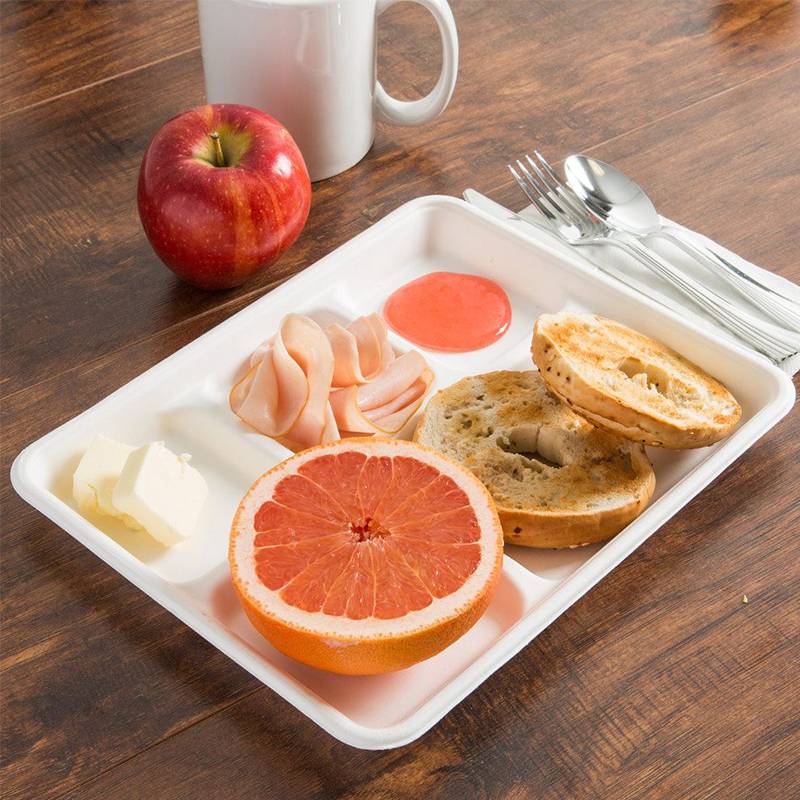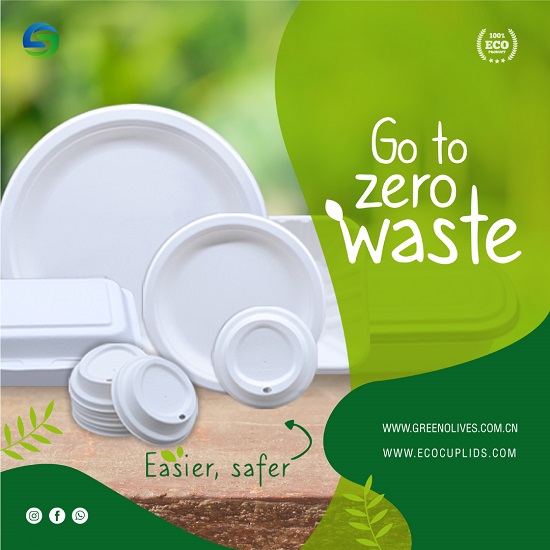Global Leading Automatic
Production Base of Eco Cup Lids
Production Base of Eco Cup Lids
So is there a kind of lunch box that can be composted? The answer is yes, that is bagasse cutlery.
Recently, there are fewer and fewer plastic products in the packaging boxes of the entire catering industry, whether it is packaging boxes, takeaways, or even paper straws that have been complained countless times before. It often makes you feel that these new materials are not as easy to use as plastics.
Needless to say, the significance of environmental protection is of great significance not only to our country, to the whole world, and to the entire planet. But environmental protection should not make ordinary people's lives full of trouble. Although I am committed to contributing to disposable utensils, I want to relax.
Environmental protection should be a meaningful and valuable thing, and it should be an easy thing. At this time, disposable cutlery needs to use environmentally friendly materials. There are many environmentally friendly materials on the market, such as corn starch and PLA, but the real environmentally friendly materials must be compostable, and the biggest difficulty of compostable degradation is to solve the problem of composting kitchen waste.

Simply put, it is to let disposable utensils and kitchen waste be composted together, instead of designing a system for compostable materials separately. But composting is just to solve the problem of kitchen waste. For example, take-out lunch boxes, you can eat halfway through the take-out, and there are leftovers in it. If the disposable cutlery is compostable, you can combine these leftovers with the lunch box. Throw them into the kitchen waste disposal device for co-composting.
So is there a kind of lunch box that can be composted? The answer is yes, that is bagasse cutlery.
The raw material of bagasse cutlery comes from one of the largest food industry wastes: bagasse, also known as sugarcane pulp. The properties of bagasse fibers can be naturally entangled together to form a tight network structure to make a biodegradable container.

This new type of green tableware is not only as strong as plastic, can hold liquids, but also cleaner than biodegradable products made of recyclable materials. The latter may not be completely deinked, and it can be left in the soil for 30 to 45 days. It will start to decompose and will lose its shape completely after 60 days. A lot of research and product development have been invested at home and abroad.
Our team is committed to continuous improvement of packaging solutions with bagasse cup lids as the main focus. Bagasse cutlery helps us achieve our mission of maintaining sustainable, safe and ethical packaging.
We are committed to changing and improving the environment and protecting human health by providing the most innovative and sustainable packaging solutions. If you have questions about custom disposable cutlery or need to purchase, you can contact us, we can wholesale more size bagasse cutlery
